25 September 2022
It’s hot as Hell and I’m not going to take it anymore!
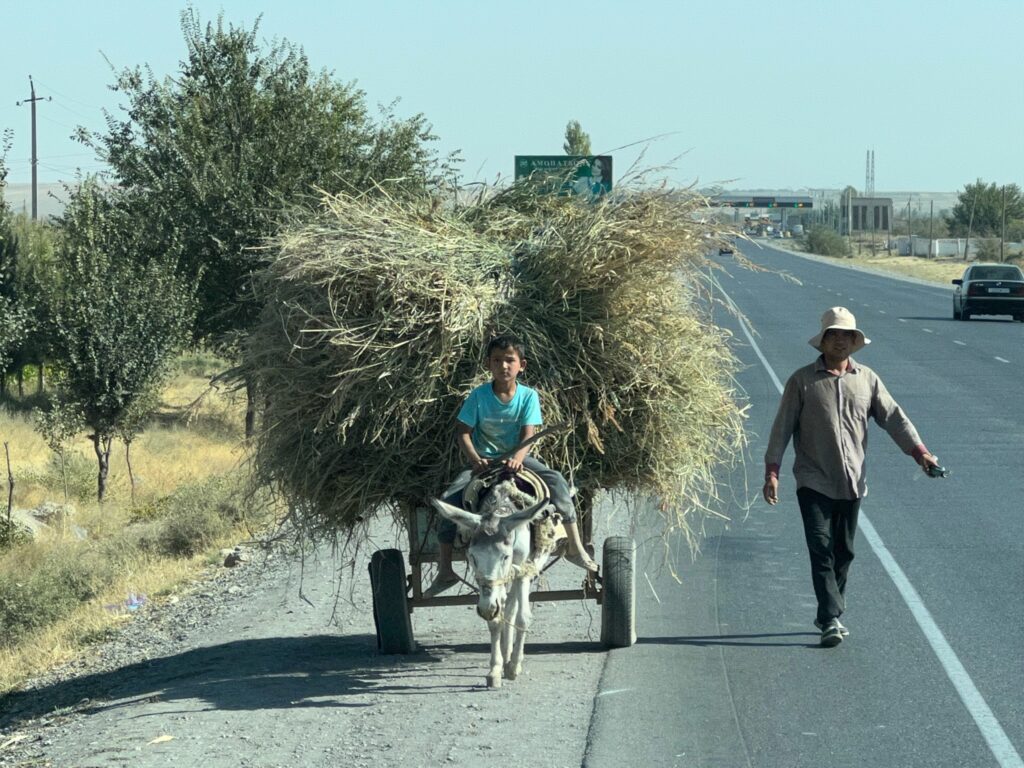
We’re on the road again. Today, we drive 50 miles southwest through the foothills to the ancient city of Istarafshan, a city that is one of the oldest in Tajikistan dating back over 2,500 years. An important stop on the Silk Road, it again is becoming a trader destination for new age tourists. The trip takes us almost 2 hours. Before 2000, the city was called Üroteppa but was renamed because of the government’s plan of Tajikization or persianiizaton. This is the planned program of cultural change with the purpose of assimilating people, culture, and language. In other words, to remove diversity and create unity.
Driving is a little easier here. It is clear the bigger guy wins right of way. We learned the red chili peppers hanging below the mirror are for luck, keeping the evil eye of pedestrians and other drivers at bay. Few rules of the road exist and while there are two wide lanes, there seem to be no rule for passing other than the bigger you are the more aggressive you are. We drove the toll road, the only route available, you pay or you walk; however, there still are donkey carts, walkers and produce tables.
On the road, we learn more about Tajikistan. The average wage is about 300$ a year. University teachers are paid much better at 400-1000$ while high school educators are paid 100-300$. Language teachers are treated better. But expenses, by western standards, are low. A large apartment would be about 50$ a month, bread is 50¢, water 2$ a month. Seeing as many have gardens and access to cheaper prices in the bazaar, most Tajiks probably live at a decent level. Petrol is 1.30$ a liter but donkey carts don’t run on gas. A serious problem is major medical care is not provided. Just when a Tajik needs help, it is not given unless the family can come up with the funds. Perhaps this helps explain a median age of 22 in Tajikistan.
We are warned about Gypsies. Professional beggars, they came originally from India. Begging became a part of their culture not because of need but as a job. Several practice the art of Fortune Telling. As in the case of all Gypsies, they are not appreciated.
Our guide explains the common practice of arranged marriages. Families work out the arrangements among themselves. Our guide’s marriage was arranged when he was 23. Time to marry and bring grandchildren into the family. His bride was 19. Three children later, all is well. He believes arranged marriages are the way to find a bride; not sure how the brides feel. He wants more children but says his wife may have more of a say in that decision.
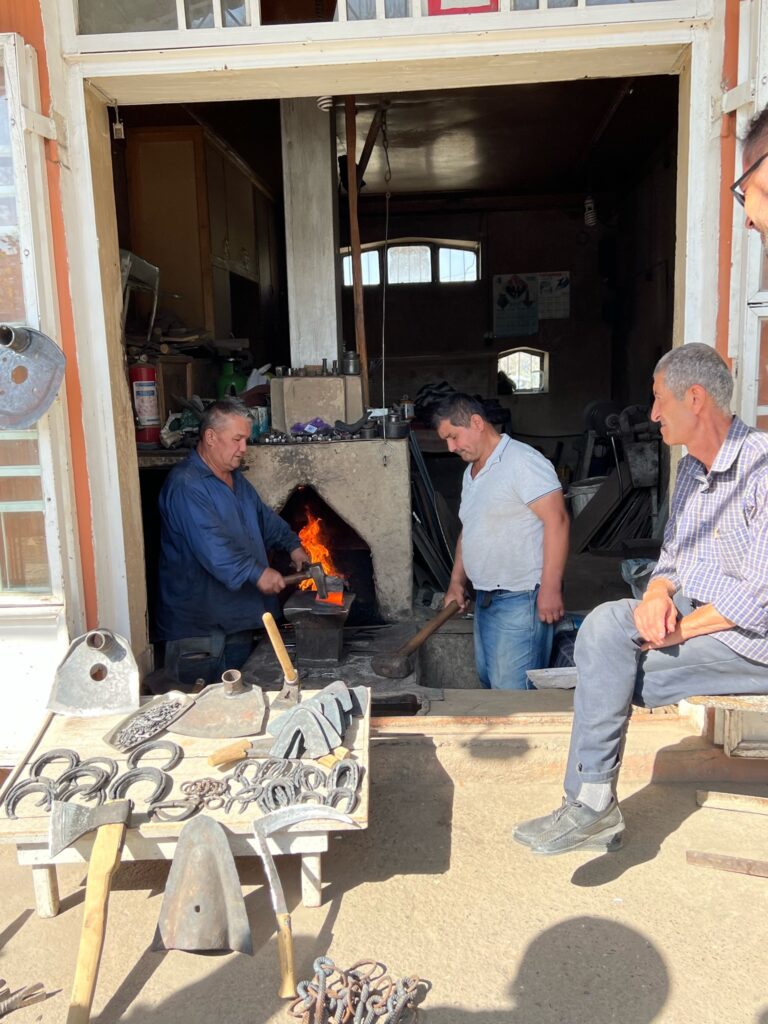
Istarafshan was an important stop along the Silk Road and is squeezed between Uzbekistan and Kyrgyzstan on three sides. The Timurid (think Timur/Tamerlane) mud-brick architecture of the city includes the Kal’ai Mug Gate (built in 2002) and Mug Tepe citadel. Though this version is more recent, the hill upon which it stands saw Alexander the Great in 329BC. Timurid fortress and buildings are tucked away around Istaravshan’s old town. So is its liveliest bazaar.
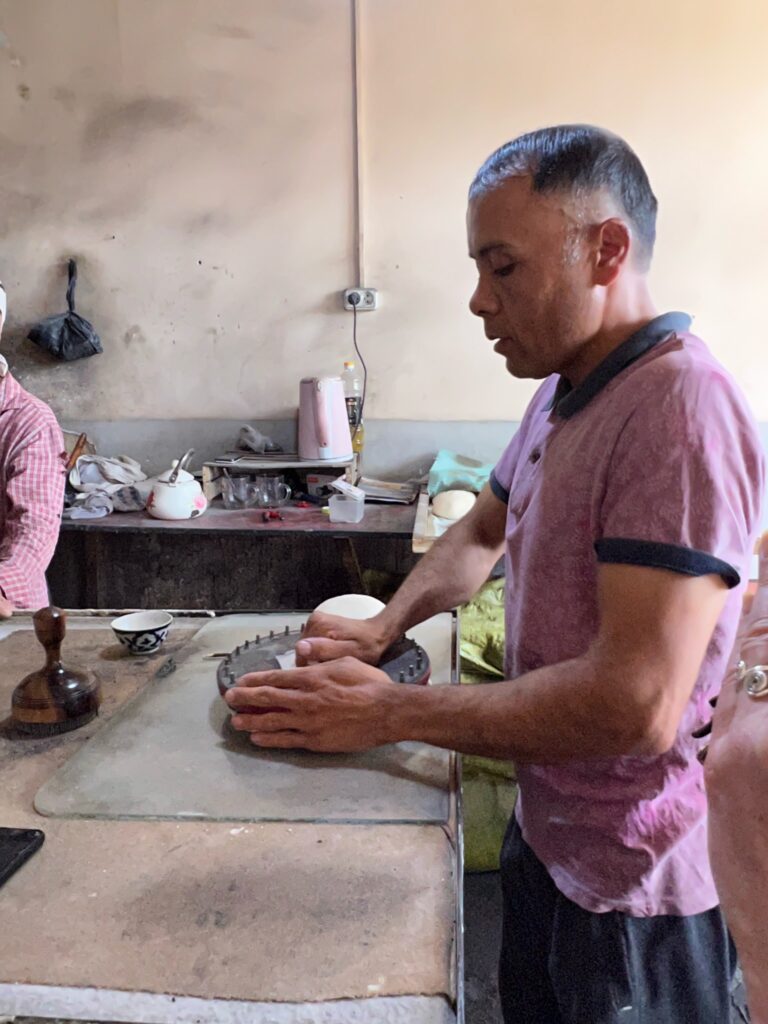
Establish a bazaar and they will come. Mug Tepa Bazaar is no different. Located at the foot of the Mug Tepa Gate, the bazaar features a mix of local merchants who will provide plenty of opportunities to learn how the Tajiks shop, barter and create. The bazaar is known for its craftsmen making knives and edged weapons, including some pretty nasty looking sabres, scimitars and daggers. The bread makers were forming, stamping and baking their round loaves as fast as they could.
Fascinating stuff when you are only used to Target and Costco.
Khazrati-Shokh Mausoleum encompasses what I love about Muslim architecture: colors, designs, wooden carvings and beautiful ceilings. The two-domed brick building is fairly modest with dual minarets. Inside is the tomb of St. Khazrati-Shokh and a chapel. Khazrati-Shokh is the brother of Kusam ibn Abbas, the cousin of Prophet Muhammad. In front of the mausoleum is a spring of water considered medicinal and holy. It is thought to have been formed when caliph Ali dropped his wooden staff into the source of the water in the mountains and according to legend it emerged at the feet of Khazrati-Shokh’s tomb. Later, his mausoleum was built above his tomb. We were allowed to enter the mosque and our guide gave us a good explanation of prayer in a Muslim’s life.
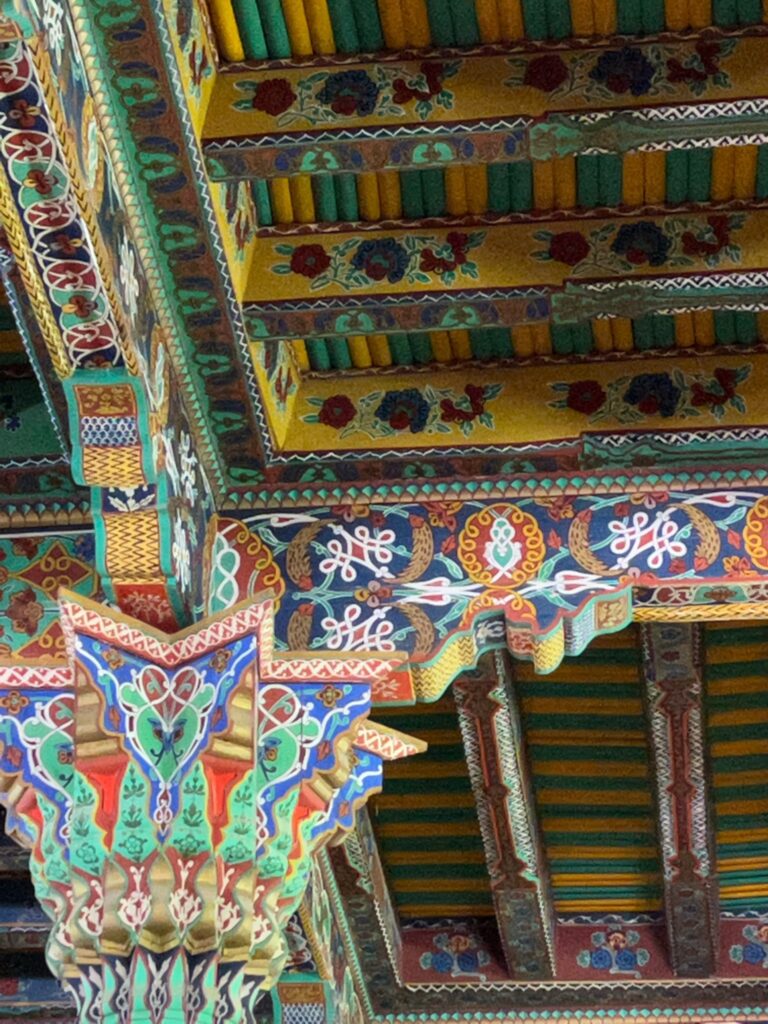
We stopped at a neighborhood Madrasa/Madrasah (Islamic school). As a part of this large complex of buildings and monuments are the Khudoyor Valami Mausoleum and Khazratishokh Mosque. The buildings encircle a huge plaza that will accommodate thousands for Friday prayer. Earlier, the city cemetery and madrasah were located here.
Madrasa is an Arabic word for any type of educational institution. The school can be secular or religious. Many of the madrasas were damaged or shut down during the Soviet time. This Madrasa was fortunate as Russian soldiers hired a master to repair their 50 years of Russian abuse. The faithful came back after the Russians left. But the schools are still suffering from neglect as today’s Muslim gets his religious training in the home until the age of 18. They are constantly battling extreme fundamentalism so one answer was to limit the Madrasa and teach religion at home.
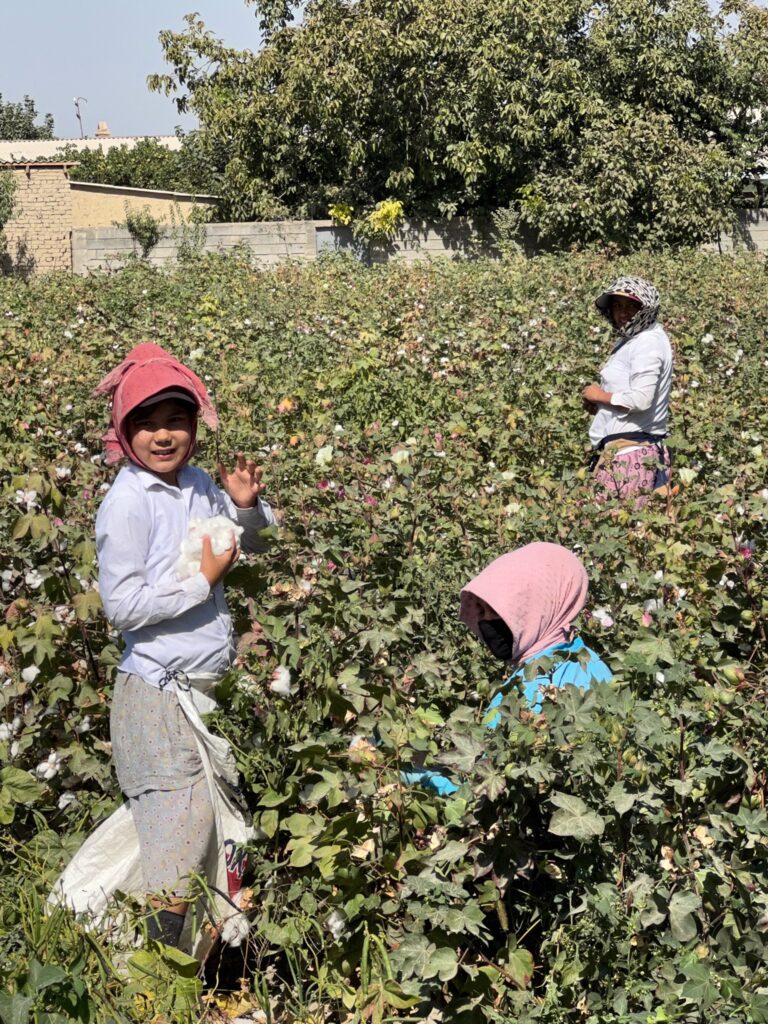
Returning to Khujand, we stopped for a photo shoot in one of the many cotton fields. Ladies are bundled up from the sun and doing the back-aching job of picking the cotton by hand. They were friendly and seemed not to mind that we gave them an excuse to pause for a moment. But then they got right back to work. I see no mechanization nor men.
An interesting tidbit of information I picked up was that while tulips are synonymous with Holland, many varieties originated in Tajikistan (Kazakhstan would disagree). Also, the country is home to the world’s 50th highest mountain (Ismoil Somoni Peak, 24,500 feet), as well as the largest glacier in the world outside of the polar regions. Amazing what one learns on long bus rides.
I see a few villages of large brick homes. Villages center around water. The houses are being built in stages and destined for extended families. The family compound can contain several rooms for parents and the youngest son. He marries and has a section of rooms for his family. The homes look very accommodating, costing maybe 30k to build. There are building codes to be met but the family builds the home as money is available.
In Khujand, we stop at the Arbob Cultural Palace, a former Soviet headquarters for farm collectives which was modelled after the Peterhof in St. Petersburg. The Soviets might have been far from home but they tended to bring their architecture and bigness with them. A statue of Urukhojaev, the Soviet leader of collective farms, is outside the palace. In 1992, this was the site for the Tajik/Soviet negotiations for independence and where the Tajik flag was adopted. More recently, the peace talks ending the Tajik civil war were held here.
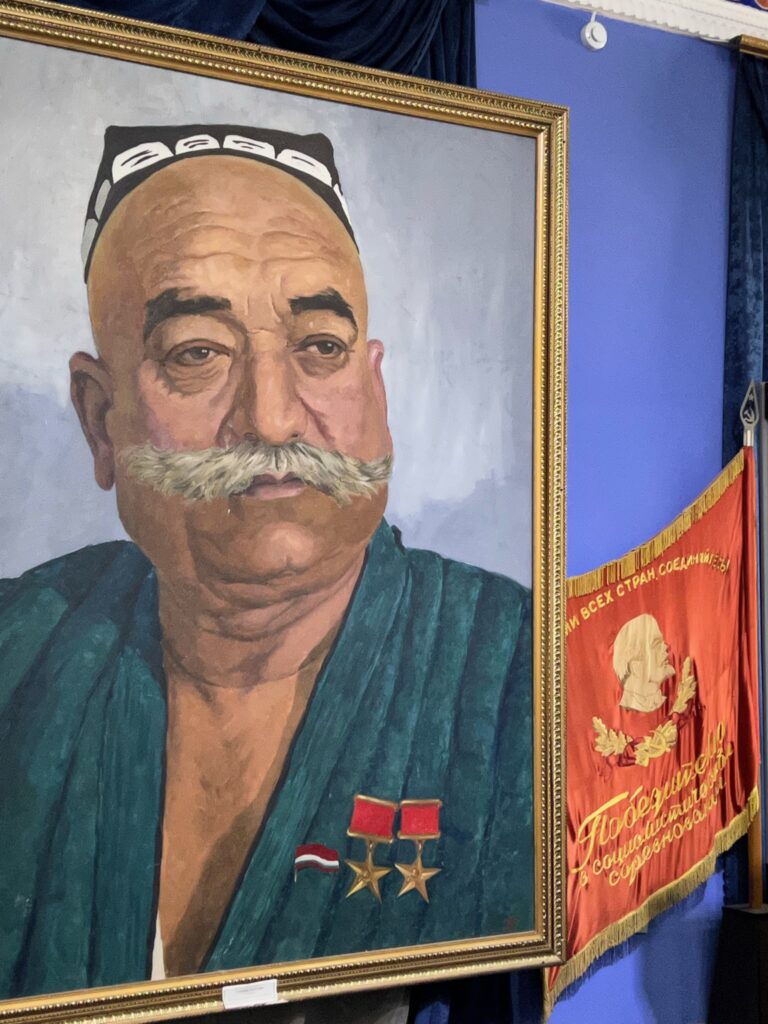
Overall, the building is quite impressive, built for rich Soviets and not the peasant farmer. The displays are in Russian but one can’t miss the basic propaganda of it all as it tells the history of the Arbob and of collectivization and the Soviet Empire in Tajikistan. Portraits and clothing belonging to Comrade Urukhojaev pay homage to his importance and also to his size as he was a very big man. There is still a Lenin Room as Tajiks still love him. The fountains and rose gardens are still being worked on, as they have been for several years already.
Politically, the Tajik government appears to be pretty much on a downhill slide since Soviet times. Their President’s smiling, stoic, charming, confident, and all his other visages are everywhere. Observers are “skeptical of promises of reform.”
Next door was one of many “wedding palaces” used for elaborate weddings and in the Stans weddings are notoriously expensive (the exception is in Tajikistan where the government limits how lavish a wedding can be). A bride and groom were standing in the heat trying to look cool for their photos. The bride’s dress was billowy and sparkly. She still looked hot.
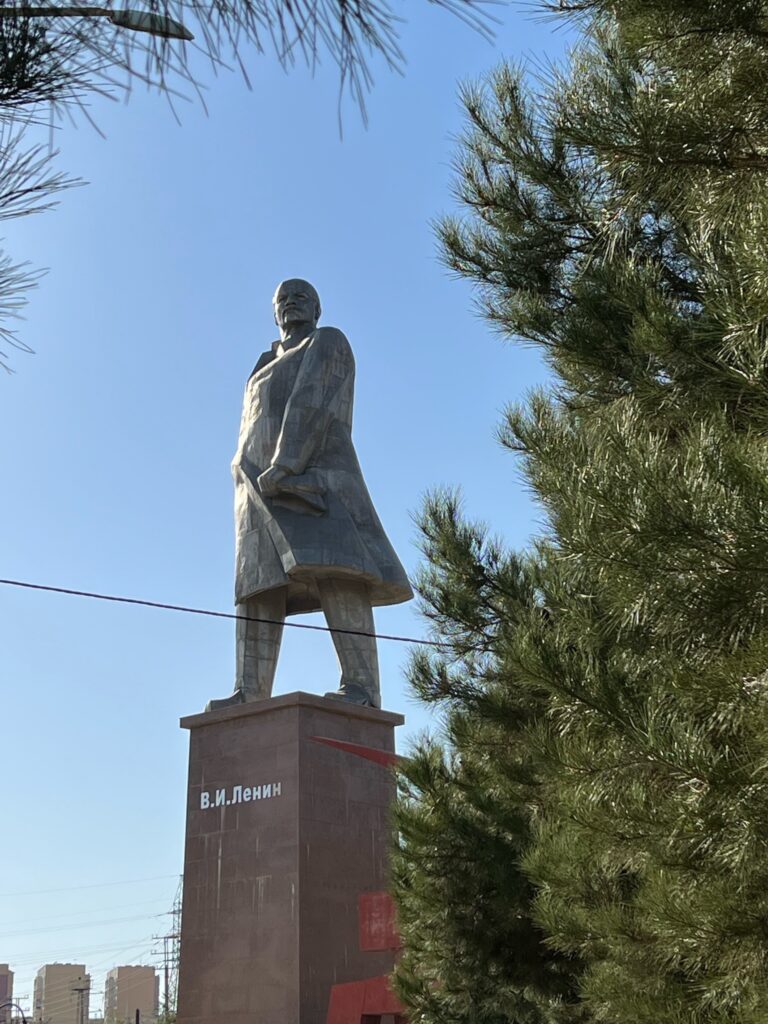
Final stop on a hot day was a rather poorly maintained Soviet Park in which are memorialized Tajiks and Soviets soldiers who fought in WW2. There is a large monument to Fallen Heroes in the Fight Against Fascism. Approximately 300,000 Tajik soldiers fought in WW2 alongside Russian soldiers with an estimated 60,000 who didn’t return home. Also a plaque recognizes those who were killed in the Afghanistan war (1979-1989). This is also the location of the gigantic Stalin statue which once graced a more honored pedestal in the city. He is now surrounded by weeds.
And with that, it is time to find our hotel, some air-conditioning, and oh how I wish, a cold beer.
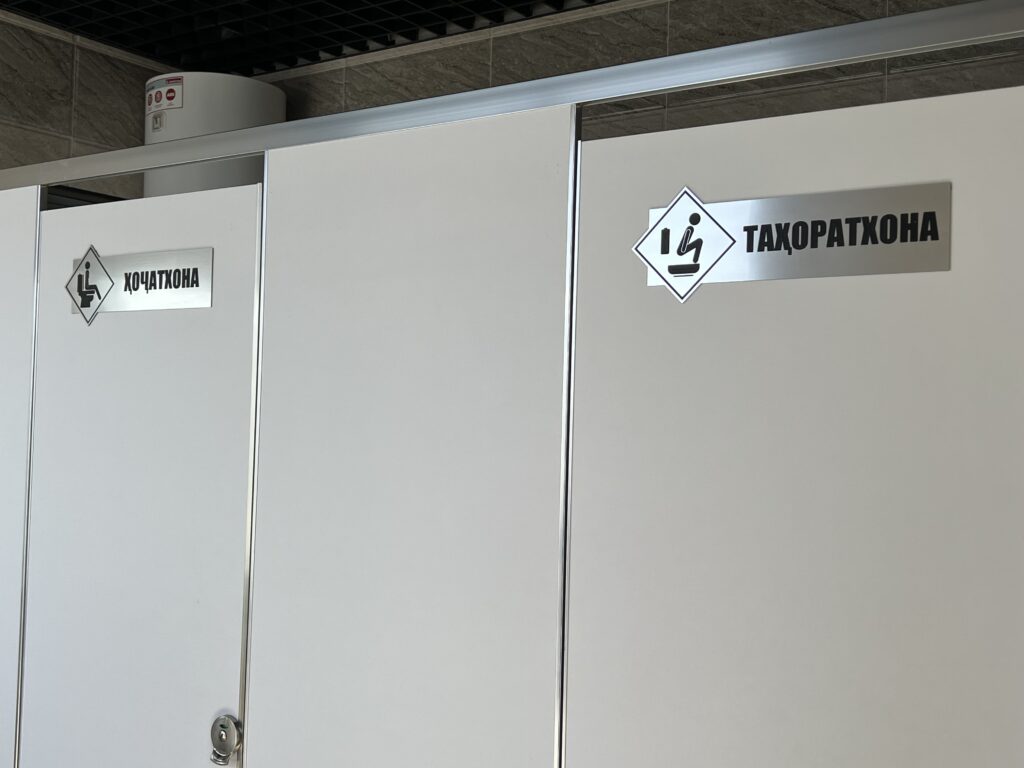
0 Comments